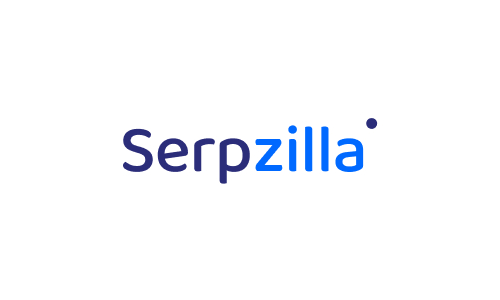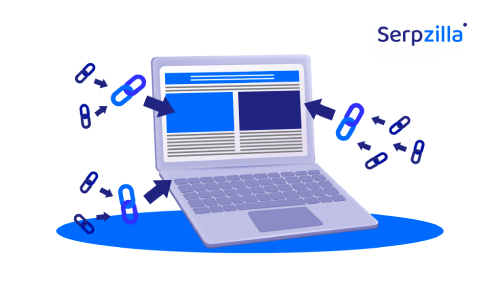Have you ever tried ignoring a garden for a year? Come back, and you’ll find weeds everywhere, dead plants, and maybe a neighbor’s cat has moved in. Your backlink profile is not that much different. Neglecting it results in wasting all your earlier SEO efforts. Think of toxic links, missed opportunities, and a lot of invisible issues dragging your site down. In this checklist, we’ll show you exactly how to monitor backlinks, spot dangers early, and monetize backlinks effectively.
Why Monitor Backlinks
Backlinks are a living, shifting ecosystem. New ones appear, old ones vanish, and some can turn irrelevant or even harmful. You need to keep your finger on the pulse, and here’s why:
- SEO can change overnight. A wave of lost high-value backlinks or a single algorithm update can crash your traffic before you notice.
- Risk or links turning toxic. Toxic links are harmful backlinks that usually come from spammy, irrelevant, or manipulative sites. Even a “good” link can turn toxic almost instantly if the referring site gets penalized, is hacked, or starts hosting low-quality content. That’s why even old links need regular checking.
- Bad links are too costly. Just a few spammy or unnatural links can drag your whole site down in terms of rankings.
- Competitors move fast. If you don’t track where they’re getting new links, you’ll miss easy opportunities and let them leapfrog you.
- Google watches for patterns. Search engines are also interested in how your backlink profile evolves, including link velocity, anchor diversity, and link sources.
Remember: monitoring backlinks is very similar to preventative medicine. Early detection = faster fixes. Catching issues early means you can resolve them quickly and painlessly before they spiral into bigger problems that drain your budget or search visibility.
Backlink Monitoring Tools: Your Control Panel
Of course, you can’t manage what you can’t see. But you don’t have to fly blind when so many powerful SEO tools for quality backlink monitoring are available. You can do much more than simply check the status of your backlink profile. Detecting sabotage, catching trends before Google does, and even spotting fresh PR or brand mentions also becomes possible. Expanding your backlink profile is also much easier with these tools.
Here’s your solid toolkit to monitor backlinks like a pro:
1. Ahrefs
Best for: Forensic-level link tracking, unusual trends, and daily/weekly alerts.
Ahrefs is a household name in SEO for a reason. Here’s what it allows you to do:
- Get link velocity graphs to instantly spot unnatural growth or sudden drops. It’s perfect for identifying negative SEO attacks or algorithm shifts before they become disasters.
Resource: https://ahrefs.com/seo/glossary/link-velocity
- Filter by new links from pages with recent traffic spikes. These trending mentions often deliver fast SEO wins, since Google is already noticing and rewarding that content.
- Use the lost and broken link checker to find reclaim link opportunities. For example, sometimes a lost link just moved to a new page, and you can quickly ask for it to be restored. You can check for broken links for free if you don’t have an Ahrefs subscription.
Resource: https://ahrefs.com/broken-link-checker
Pro tip: Set up automated alerts for any domain rating (DR) drops, new referring domains, or suspicious anchor text spikes. Use the referring domain filter to spot unusual countries or industries sending links: this can quickly reveal both negative SEO attacks (or PR wins). For anchor text, create a saved report filtering for sudden increases in exact-match commercial keywords, which often signal manipulative link building (yours or against you). This helps you react to negative changes in your backlink profile before damage spreads.
2. Semrush
Best for: Running full link-building campaigns, using built-in email outreach tools, competitor analysis, automated link audits for removing toxic backlinks.
Semrush is another must for keeping an eye in your profile and auditing your backlinks the smart way. It includes all the essential tools for link building, such as backlink tracking, alerts, and reports on new and broken links.
- What makes Semrush many SEO experts’ favorite compared to Ahrefs is its built-in Link Building Tool. It offers a complete workflow with email outreach, prospect prioritisation, and a CRM-style interface for managing campaigns.
- It’s also strong when it comes to toxic backlink detection. Its Backlink Audit Tool assigns a Toxicity Score and connects directly to Google’s Disavow Tool. You can export the “potentially toxic” links for deeper manual review. This makes it easier to manage link risks.
Source: https://www.semrush.com/blog/toxic-links-guidelines/
- Automate outreach for link removals: set up a template, and Semrush will track who replies.
- Try the Backlink Gap tool to discover not just what links you’re missing, but also which types of sites are linking to them most. It can be news media, SaaS blogs, industry resources, or local directories. This lets you spot patterns and untapped categories to target for your own outreach.
Source: https://www.semrush.com/analytics/gap/backlinks/
- Tag and segment links by intent (editorial, sponsored, guest post, scraped) to track campaign ROI over time.
- Use AI-driven recommendations for which links to disavow, keep, or investigate
- Look into historical data to compare link profile changes across major Google updates
Pro tip: Combine Toxicity Score with spam flags and manually scan for suspicious patterns. For example, you can spot a sudden batch of links from blogs with spun or duplicate content, or 10+ medium-risk links from the same IP range in a week. This often signals a coordinated link scheme and turns what looked like minor risks into a major problem worth urgent SEO cleanup.
3. Google Search Console (GSC)
Best for: Google’s direct view, anomaly detection, and quick cross-checks.
GSC is Google’s own, free platform for webmasters. It gives you a direct window into how Google sees and values your backlink profile, and alerts you to changes that other tools might miss.
Source: https://search.google.com/search-console/welcome?utm_source=about-page
- Use the Links report and see who links to you the most, your top-linked pages, and more. You’ll be able to catch surprise surges or losses Google notices in your profile.
- Export your most-linked pages every month. If you notice a key landing page (like your main product or “money” page) suddenly drops off the list or gets fewer links, investigate immediately. This usually means you’ve lost important backlinks or something’s changed that could hurt your rankings and conversions.
Source: https://www.searchviu.com/en/export-backlink-data-google-search-console/
- Spot international or language-specific links you might miss elsewhere. That’s key for global SEO.
- Verify link intent by matching referring domains with sudden changes in traffic or conversions.
Honorable mentions
- Serpzilla: Top choice for quickly finding, acquiring, and tracking high-trust backlinks to fill gaps left by lost or toxic links.
- Linkody: Best for simple, daily link monitoring and instant email alerts about new or lost backlinks.
- BuzzSumo: Perfect for turning unlinked mentions into new backlinks.
- Kerboo: Deep link auditing, automated toxic link scoring, and workflow management for cleanup projects.
Your Step-By-Step Backlink Monitoring Checklist
Now that your control panel is assembled, let’s put it to work. Follow this simple workflow for keeping your backlink profile clean, competitive, and penalty-proof.
1. Analyze your backlink profile
On top of assessing the number of backlinks, check their overall quality, diversity, and naturalness. You’re looking for patterns (both good and bad) that can affect your SEO. The goal is to catch risky links, anchor text spam, or unnatural trends before they trigger ranking drops or penalties.
Benchmarks for a healthy backlink profile:
- For most niches, <5% of links should be exact-match money keywords (the rest should be branded, generic, or natural).
- Avoid links from DR < 10 unless they’re highly niche-relevant or new.
- A healthy profile has links from different domains, not dozens from one source.
Red flags signalling a spammy/toxic link:
- Link farms. Domains with 1000s of outbound links, little/no real content.
- PBNs. Networks of thin sites interlinking, usually with spun content.
- Spam directories. No editorial standards, irrelevant topics, and low traffic.
- Sites under penalties. Use Ahrefs/SEMrush “penalty risk” signals (e.g., DR < 5, DA < 10, Moz Spam Score > 8).
- Exact-match anchor overload. Too many links use your target keyword, not your brand or natural language.
- Links from hacked sites. Sudden, unrelated links.
2. Clean up spammy and toxic links
Found bad links in your profile? Take these steps:
- Export and label. Use your tool to export all suspect links and sort by risk (toxic, suspicious, low-value).
- Review manually. Visit sites, check content quality, and see if your link is naturally placed or looks forced.
- Outreach for removal. Email site/webmaster with removal requests. Track responses in a spreadsheet for convenience.
- Disavow unresponsive/impossible links. Add the worst offenders to a disavow file and submit it in GSC.
- Review the anchor text. Rebalance by earning more branded/natural links.
- Schedule follow-up audits. Set quarterly/monthly audits or automate alerts in your SEO tool.
3. Track new and lost backlinks
It’s normal for links to come and go. However, you’ll want to make sure that no sudden floods, mass disappearances, or sketchy patterns arise in your profile.
| Type of change | Healthy/expected | Red flags | Next steps if the problem is detected |
| New links | New links from industry sites, news, guest posts, or natural content mentions (signals real relevance) | Large influx from unrelated forums, low-DR blogs, or sketchy directories (may signal negative SEO or risky link buying) | Investigate source, disavow toxic links, slow down link building if unnatural |
| Acceptable burst | Major PR, viral content, or product launches can trigger a “natural” surge | — | Monitor for further spikes, ensure link quality is high |
| Lost links | Pages deleted, site changes, link rot | High-value editorial links disappear, or many links drop for no clear reason | Investigate the cause, contact webmasters, attempt to recover or replace lost links |
Pro tip: Watch your link velocity. Natural profiles in most niches grow steadily, just a few % per month. If your velocity is flat or jagged, Google’s algorithms may flag you for further review.
4. Monitor competitor backlinks
Use competitor link monitoring for fast insights:
- New opportunities. Track where competitors get links. If they land a guest post, try pitching the same site with a better angle or topic.
- Industry trends. Do you see sudden link growth for a competitor? They may have launched a campaign, event, or new tool. It’s always worth checking out.
- Defending your position. If you start losing links to the same domains your competitor is gaining, it’s time to update your content, improve your offer, or step up outreach.
- Reverse-engineering campaigns. Analyze link types (resource pages, PR, reviews) and anchor text to see what Google is rewarding in your niche.
To get started with competitor analysis, you can:
- Put together a watchlist of 3-5 top competitors.
- Schedule monthly reports for new/lost links and link velocity comparisons.
- Set alerts for new high-DR placements by competitors in your backlink monitoring tool.
5. Measure your SEO performance
If you’re monitoring backlinks, you should be able to prove the impact. Use analytical insights to connect changes in your link profile to shifts in rankings, organic traffic, and conversions. This way, you’ll know exactly what works in your SEO strategy.
Pay special attention to these fundamental metrics:
- Organic traffic. Assess growth or decline mapped to link acquisition/removal events.
- Keyword rankings. Watch for keyword clusters rising/falling after major link changes.
- Domain authority/DR. It’s not a direct ranking factor, but it’s useful for trendlines.
- Conversion metrics. More authority often means higher click-through and trust.
Pro tip: Whenever you add or lose a batch of backlinks, mark those dates as annotations in Google Analytics and Google Search Console. Then, overlay your link events with traffic and ranking graphs to clearly see how fast each link-building (or cleanup) effort impacts your SEO results.
While correlation is not always equal to causation, sharp traffic/ranking changes usually line up with major link events. The more granular your tracking, the faster you’ll spot what makes the difference in your backlink profile building and maintenance.
What to Do When Natural Backlinks Aren’t Enough
Sometimes, you’ll hit a wall with your link profile when new high-quality links just aren’t showing up fast enough. Maybe your niche is saturated, or you’ve lost links to aggressive competitors. If your rankings and authority are stuck, it’s time to go beyond waiting for organic mentions and start closing those gaps directly.
You can easily do it with Serpzilla, a platform designed for sourcing high-trust, relevant backlinks exactly when and where you need them most.
Here’s what Serpzilla does for your backlink profile:
- Gives you instant access to thousands of vetted, high-authority websites across any niche or region.
- Lets you filter sites by real organic traffic, topic relevance, and trust metrics. You’ll never waste your budget on weak links.
- Lets you plug urgent “link gaps” (for example, after losing important links or launching new pages) in days, not months.
- Helps you test different link types or anchor strategies in real campaigns, so you can double down on the most effective ones.
- Makes it easy to scale safely. You can blend purchased and natural links for a profile that looks natural to both Google and competitors.
Bottom line: With Serpzilla, you can take control of your link-building pace and fill urgent gaps in your profile to improve your rankings fast. See how Serpzilla works in a live demo and read clients’ success stories.
Final Word
Don’t let your backlink profile become “set it and forget it.” Regular backlink monitoring keeps your SEO growth sustainable. Make this type of check a habit, and your rankings will thank you.
Stay tuned to emerging link trends, too. What works today may shift tomorrow as Google and your industry undergo new changes. Proactive monitoring means you’ll adapt quickly and never be caught off guard.





